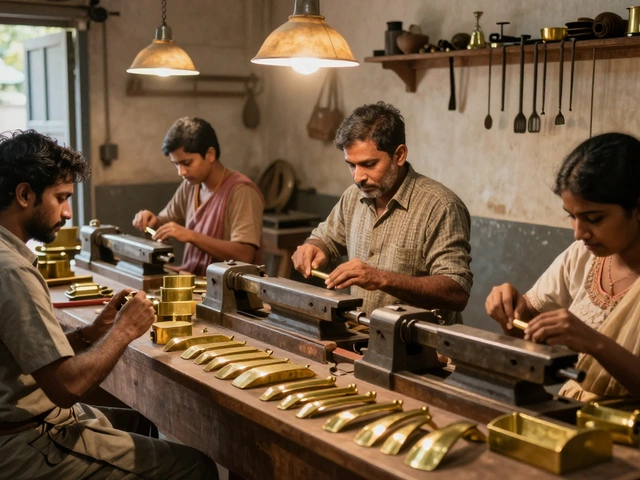Indian Drug Manufacturers: Trends, Challenges & Opportunities
When talking about Indian drug manufacturers, companies that research, produce, and distribute medicines across the Indian market. Also known as Indian pharma firms, they form the backbone of the country's pharmaceutical industry, a sector that spans drug discovery, clinical trials, manufacturing, and distribution. These manufacturers are best known for delivering generic drugs, low‑cost equivalents of patented medicines that follow the same safety and efficacy standards to a massive domestic market and to export destinations worldwide. A critical piece of the value chain is API manufacturing, the production of active pharmaceutical ingredients that become the core of any drug formulation. Together, these entities shape a vibrant ecosystem where cost advantage, regulatory compliance, and innovation intersect. Indian drug manufacturers are rapidly scaling capacity while navigating global quality expectations, making them a key player in both local health care and international supply chains.
Key Drivers Shaping the Landscape
The first driver is cost efficiency. Labor, raw material sourcing, and energy costs in India remain lower than in many Western countries, which enables manufacturers to produce generic drugs at competitive prices. This cost edge feeds directly into export growth; in 2024‑25, Indian firms accounted for over 40% of the global generic drug market share, with the United States, Africa, and the Middle East as top destinations. The second driver is regulatory alignment. Adoption of WHO‑GMP and US FDA standards by major Indian manufacturers has unlocked access to regulated markets, forcing firms to upgrade facilities, implement robust quality management systems, and secure certifications like ISO 13485. The third driver is R&D investment. While generic production dominates, leading firms are expanding into biosimilars and novel drug development, leveraging government incentives such as the Production Linked Incentive (PLI) scheme. These incentives reward companies that increase domestic API output and export volumes, directly linking financial support to the growth of the API manufacturing segment.
Challenges, however, keep the sector on its toes. Supply chain disruptions—especially for bulk chemicals sourced from Europe or China—can halt production lines, highlighting the need for local API diversification. Intellectual property disputes also arise when generic versions are launched close to patent expiry dates, requiring legal expertise and careful market timing. Furthermore, stringent quality audits from foreign regulators can delay batch releases, making compliance a continuous operational focus. To mitigate these risks, manufacturers are adopting digital twins for process simulation, investing in advanced analytics for predictive maintenance, and forming strategic partnerships with contract research organizations. Such moves not only improve efficiency but also build resilience against future shocks.
Looking ahead, the convergence of digital health and personalized medicine promises new avenues. Companies that can integrate data‑driven formulation techniques with existing API capabilities will likely capture emerging market segments, especially in oncology and chronic disease management. Meanwhile, the growing demand for affordable vaccines and antivirals—accelerated by global health emergencies—creates a clear path for Indian firms to expand their product portfolios beyond traditional small‑molecule generics.
Below, you’ll find a curated collection of articles that dive deeper into these topics: cost comparison with China, startup financing for new drug factories, waste reduction in pharmaceutical production, and the latest rankings of the richest pharma companies. Each piece adds a layer to the broader picture of how Indian drug manufacturers are evolving in a fast‑changing world.
How many pharma manufacturing companies are there in India?
India hosts roughly 12,400 licensed pharma manufacturing companies in 2025, with most located in Maharashtra, Gujarat and Karnataka. The article breaks down types, sources, and how to verify the count.
Read More




